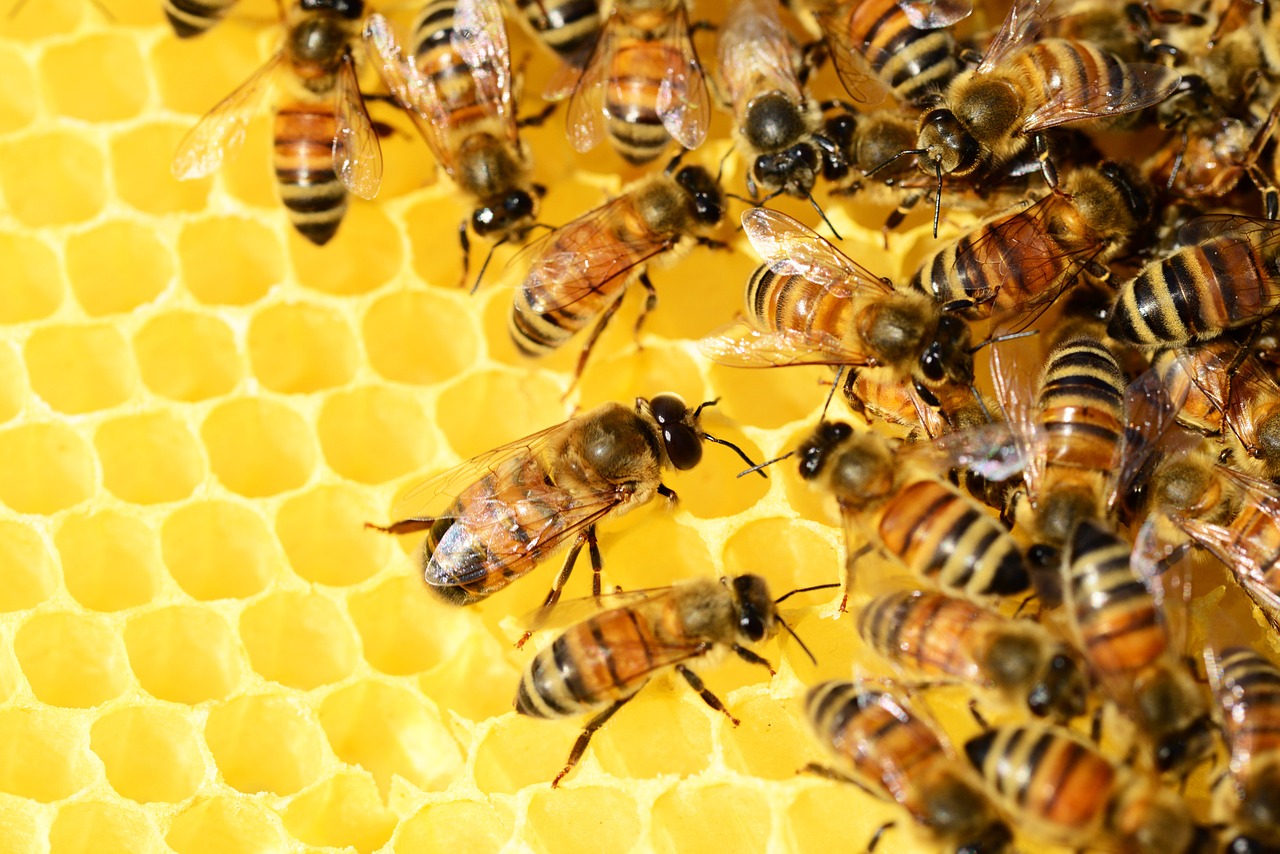Beekeeping has become one of Afghanistan’s most popular industries, as hundreds of beekeeping farms have been established across the country over the last few years. The farmers who operate them value the low-labor, income-producing practice.
“It is an easy, simple job, and you only need a little money to start this business,” beekeeper Zamanuddin Ahmadi recently told Arab News. “The money you earn from it is good.” Ahmadi, who keeps bees in northern Afghanistan, owns 160 hives and has become of the biggest honey producers in his region.
Agriculture officials report that Afghan beekeepers earn a steady income, which can be difficult in a country where many farmers are dealing with issues such as regular droughts. While there is not yet a sizeable market for honey in Afghanistan, farmers have found eager buyers in neighboring Pakistan and Iran, and the industry continues to grow.
Fulfilling work
Badakhshan, the remote Afghan province where beekeeper Ahmadi works, is now home to nearly 600 honey farms of all sizes. In 2019, Badakhshan beekeepers produced 283 tons of Afghanistan’s 2,150 tons that year, according to the Afghanistan Ministry of Agriculture.
While the region is impoverished, it is proving to be a fertile growing area for high-quality, natural products. Badakhshan enjoys a great climate and topography, as well as an abundance of wildflowers that create good conditions for bees.
Officials say that Badakhshan and the neighboring region of Takhar have recently experienced a 70% increase in honey production. The quality of the region’s honey means that beekeepers can make a good profit from selling it.
Beekeepers can sell a top-shelf honey called Shegalak for about $10 (800 afghanis), and buyers in India and the UAE, which now also imports it, pay about 4,000 afghanis per kilo.
Beekeepers in the Baghlan province, which is located north of Kabul, say the work is profitable and that they find it fulfilling. Matiullah, a farmer in the province of Baghlan, told a media outlet recently that his quality of life has increased since he began beekeeping four years ago. He now makes between $2,000 and $3,000 annually selling honey, which helps to support his family.
Matiullah said that his bees make “pure” honey and that the successful industry has raised interest in beekeeping in the area. He has continued farming other crops, including corn and wheat, in order to make more money. In Afghanistan’s unstable environment, work can prove unstable.
In the southern part of Afghanistan, beekeeping has also become a popular occupation. In 2019, farmers in the Helmand province harvested more than 16 metric tons of honey, a 10% increase over 2018 production. Beekeepers here say they like the fact that the industry is low-cost and profitable.
“The affordable beehives can be placed anywhere, troubling no one and yielding high returns,” beekeeper Abdul Khaliq told a media outlet.
Now, Helmand is home to hundreds of apiaries, including about 400 in and around the capital city of Lashkar Gah, and the region is becoming known for honey production.
Building markets
While beekeeping is flourishing, the Afghan industry is still exploring how to sell it. Some farmers have experienced success locally, including beekeepers in Helmand who sell honey at the gates to their farms, to their neighbors, or to contractors who are working in their area.
However, local markets are often flush with honey, and farmers are hoping to expand the export market for Afghan honey beyond neighboring countries. Many worry about a dearth of markets for their honey and have asked government officials to provide training and better packing for their product.
The Afghan government has repeatedly stressed its support for honey production. In 2018, Agriculture Minister Nasir Ahmad Durani said at a World Honey Bee Day ceremony that Afghanistan had the capacity for annual production of 11,000 tons of honey and that Afghan honey should be upgraded to international standards and sold on international markets.
Durani also stated that the Ministry of Agriculture, Livestock, and Irrigation is working on increasing the country’s honey production, locating more markets for it, and encouraging the private sector to build more modern facilities for beekeepers. Officials already have provided more than 200,000 bee boxes for honey collection in 32 provinces.
One persistent problem is honey arriving on the Afghan market from unknown sources, bringing into questions its quality. While beekeepers have asked for this honey to be banned, the Afghanistan Beekeepers Union has said that it will work with the government to resolve the problem.
Regardless of reports of low-quality honey in the Afghan market, industry predictions remain positive and indicate continued growth. More than 6,000 beekeepers are members of eight cooperatives, and 28 beekeeper unions have formed in Afghanistan. In 2019 alone, an agricultural development program built more than 400 beekeeping farms in a single province. As domestic production grows, officials also have said that Afghanistan would reduce its honey imports.

